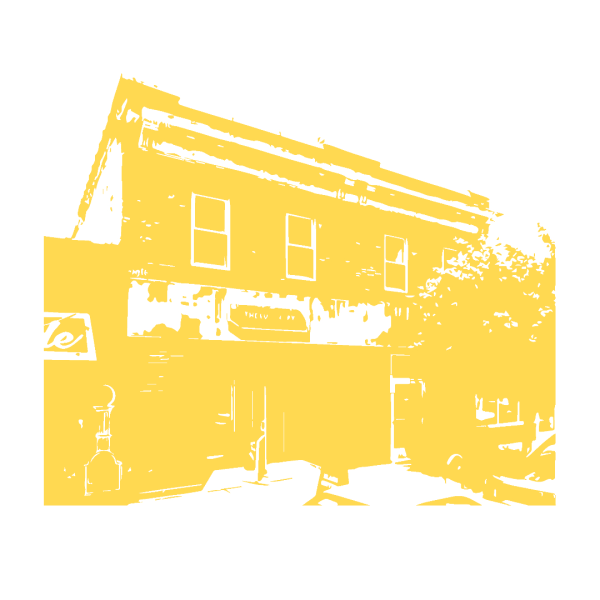
 If you are looking for: social intimacy, thoughtful discourse and contemporary and local art.
If you are looking for: social intimacy, thoughtful discourse and contemporary and local art.
The Luminary serves as both a physical space for gathering and experiencing art, as well as a social space for creating change. Exhibitions, residencies, performances, publications and gatherings coexist in this distinctive art space fostering creative exchanges between artists. Its engaging programs explore critical topics relating to race, gender and status, promoting art and dialogue as a catalyst for transformation. The Luminary is currently showcasing new works by 13 artists engaged with the institution at varying levels in its exhibition “To Pillar, To Platform,” on view until Dec. 2, 2023. Filmmaker and photographic artist Emma Bright plays with crystals and light refraction in her storytelling pieces that forge connections between storyteller and audience. Brian Lathan, a Luminary studio member and professor of Printmaking here at SLU, comments on narratives through print, digital illustration and sculpture.
Just next door, Monaco supports the Luminary’s dedication to artist-centric spaces as an alternative to rejecting the traditional gallery concepts. Traditional galleries are typically run by buyers whose goal in gallery work is to make a profit. Monaco, on the other hand, is artist-run and seeks to amplify artists’ voices. When artists are involved as essential stakeholders, viewers receive a more raw representation of their creative works. Monaco currently has two works on view: “SPORTS!,”an exploration of video performance and sculpture, and “Orator,” a series of slate drawings. Both exhibitions are on view until Nov. 19, 2023.
The Luminary provides a stipend and rent-free use of the space’s bar area to Black Coffee, a coffee shop dedicated to fostering collaboration within the creative community. Located on the culturally rich Cherokee Street, the Luminary has a raw-space feel with high ceilings, natural wood elements and blank walls with a capacity for custom transformation. While many gallery spaces are activated with framed pieces and block-style pedestals, exhibitions in the Luminary tend to take on a more immersive role. The space is transformed so that visitors experience art, frequently altering the interior landscape of the space with furniture and life-size installations. The Luminary and Monaco are free to the public.
If you are looking for: cultural relevance, contemporary and minimalist architecture, and historically-significant and contemporary art.
Just a three-minute walk from SLU’s campus, the Pulitzer Arts Foundation is located in the Grand Center Arts District. The Pulitzer’s architecture itself serves as a piece of art for visitors to walk into. Tadao Ando designed the building with natural elements like water and light in mind, complete with his signature use of concrete. Wide open spaces and natural lighting allow for visitors to have a more fluid experience with the art. An alcove in the building makes space for a long, reflective pool of water that visitors can access through the main gallery. Park-Like and Spring Church shape the Pulitzer experience and the spaces surrounding it. The Pulitzer offers a wide range of free public engagement programs, including workshops and musical events. Recent shows have explored relevant topics like family histories of Native persons, the culture of St. Louis, liberation, racism, feminism and misogyny. If not including the building itself, the Pulitzer houses two pieces in its permanent collection: “Blue Black” by Ellsworth Kelly in the main gallery, and a sculpture by Serra Joe in the courtyard.
Originally built by Tadao Ando as a space to display Emily Rauh Pulitzer and Joseph Pulitzer Jr.’s art collection, the Pulitzer soon evolved into a non-collecting art museum. Its exhibitions are largely contemporary, with some historic collections emphasizing cultural narratives. Because of the building’s unique architecture, some artists are invited to create site-specific installations. Currently on view, Sarah Crowner’s “Around Orange” responds to both Ando’s architecture and works by her longtime inspiration Ellsworth Kelly. On the lower level of the museum, “Urban Archaeology: Lost Building of St. Louis” showcases salvaged architectural elements from the National Building Arts Center. Both shows are on view until Feb. 4, 2024. Entry to the Pulitzer is free for all.
A few steps through the Pulizter’s courtyard brings visitors to the Contemporary Art Museum (CAM). CAM, like the Pulitzer, relies on exhibitions rather than a permanent collection. CAM currently has six exhibitions on view, including an immersive solo exhibition by Hajra Waheed and a site-specific installation critiquing cultural stereotypes of what it means to be Latinoby Justin Favela. The lot of six exhibitions is on view until Feb. 11, 2024 with free entry.
Visitors can grab a coffee at the cafe inside, sit outside in the courtyard or shop in the gift shop when they are not viewing the art. Built a couple years after the Pulitzer by Brad Cloepfil, CAM’s architecture responds to the Pulitzer’s and creates versatility for the artists it serves. “In making space for contemporary art, the architect must first serve the artist; not by attempting to render a ‘background’ for art, but by providing the artist with a specific spatial presence, an intentional vacancy that achieves meaning through the art itself,” said Cloepfil. Cloepfil’s vision comes to fruition in CAM’s concrete, wide-open spaces with options for both enclosed and open galleries.
If you are looking for: classic, diverse, ancient to contemporary art
The Saint Louis Art Museum (SLAM) boasts a renowned permanent collection as well as rotating special exhibitions. The 36,000 object-collection spans five millennia and across cultures from six continents. Highlights include extensive Native artworks, paintings by renowned Black contemporary artists Kehinde Wiley and Kerry James Marshall, a diverse ceramic and object collection, as well as paintings from European classics like Monet, van Gogh, Beckman and Picasso. With the exception of some special exhibitions, SLAM is free and open to the public.
SLAM has three special exhibitions on view currently: “The Culture: Hip Hop and Contemporary Art in the 21st Century,” “Aso Oko: Prestige Cloth from Nigeria,” and “Ellsworth Kelly.”
“‘The Culture: Hip Hop and Contemporary Art in the 21st Century’ presents a sweeping art history of hip hop culture and its myriad expressions across the globe,” says SLAM. The multimedia exhibition showcases contributions to hip hop culture like music, visual and performing arts, fashion and technology. Artworks from icons like Jean-Michel Basquiat and Virgil Abloh, as well as several St. Louis and Missouri artists are included. “The Culture” is on view until Jan. 1, 2024 and tickets are $10 for students.
“Aso Oke: Prestige Cloth from Nigeria” displays a variety of textile examples of aso oke (ah-shō ōkay): hand-woven cloths made by Yoruba weavers in southwestern Nigeria from the early 19th to the late 20th centuries. Undied, magenta and indigo silk transform into cloths for celebratory and ceremonial clothing. “Aso Oke” is on view until March 10, 2024, and the exhibition is free.
“Ellsworth Kelly” celebrates Ellsworth Kelly’s would-be 100th birthday with a range of paintings, sculptures, drawings and prints. Kelly is best known for his use of form and color in the abstract art movement. The exhibition is on view until April 7, 2024, and is free.
SLAM’s physical structure, which sits in Forest Park, is made up of two parts: the east building and the main building. The main building was built for the 1904 World’s Fair as a structure intended to outlast the Fair. The building’s Beaux-Arts style features ornate sculptural details and a grand facade with massive Corinthian columns. The east building, designed by David Chipperfield in 2013, connects to the main building and stretches around it. Its floor-to-ceiling windows give visitors prime viewing of SLAM’s grounds and sculpture gardens.
SLAM is sprawling, making maps a must-have when visiting. The grandeur and architectural beauty of the building make for a classic museum experience unlike the Luminary or CAM.
